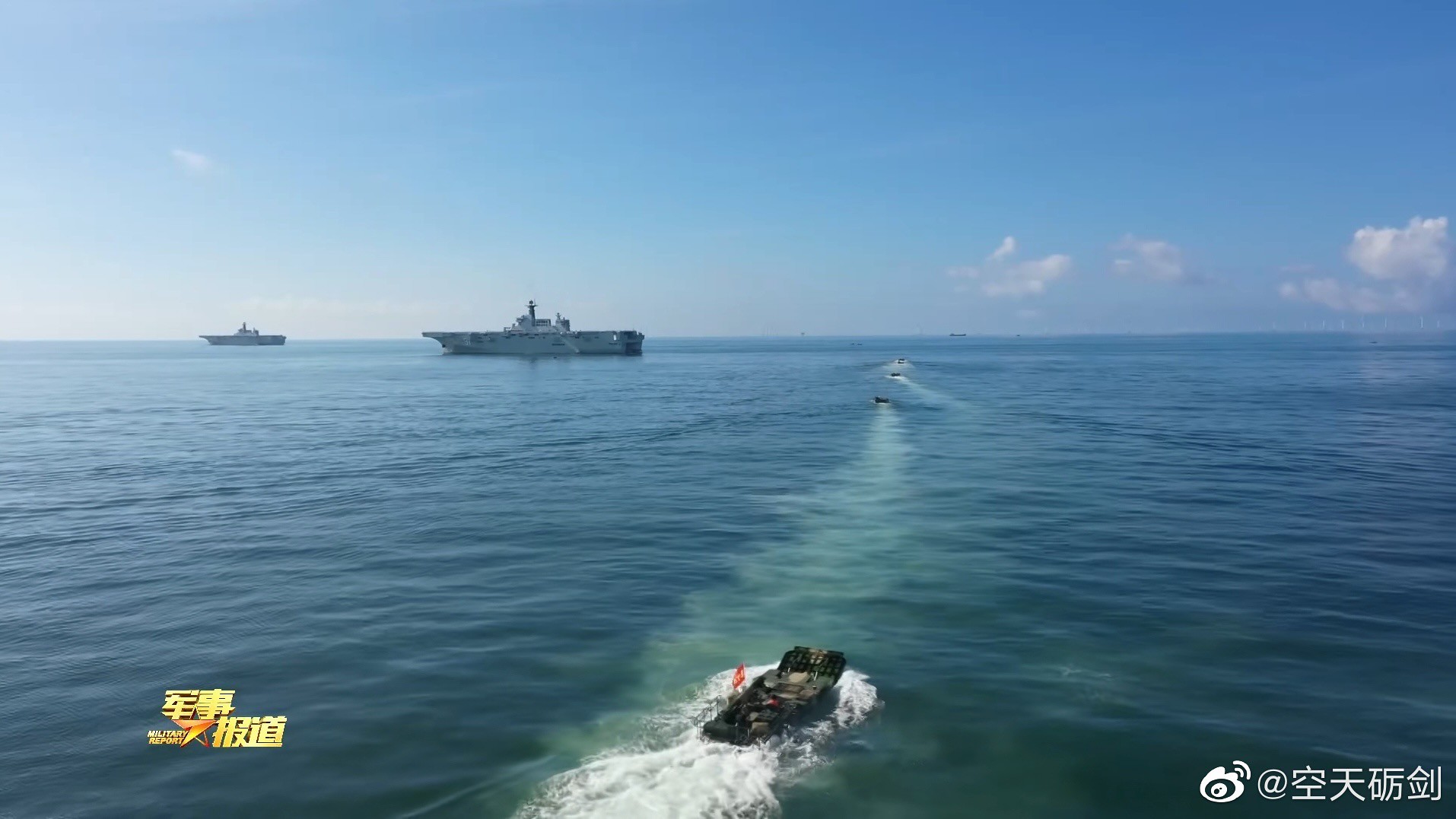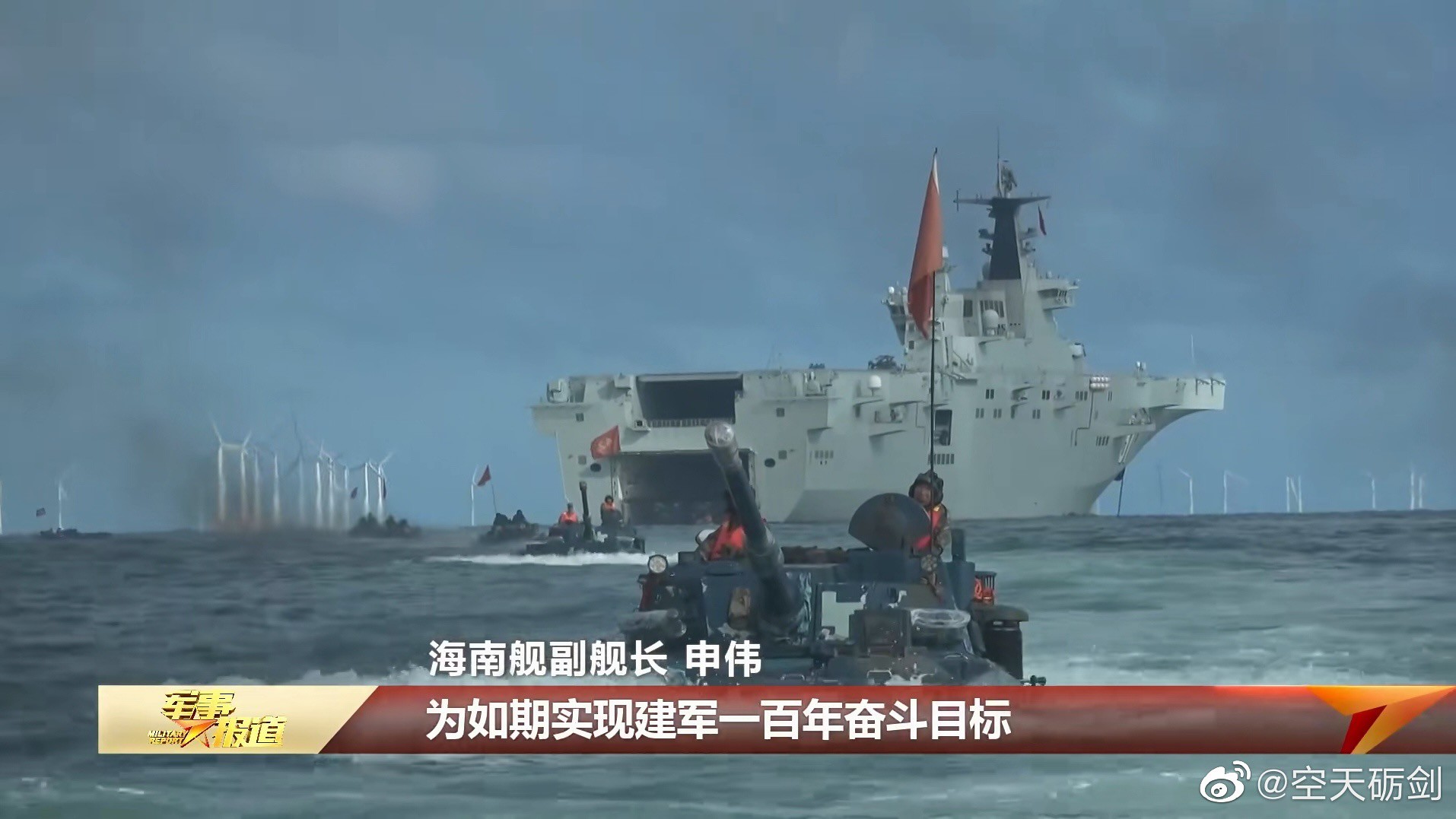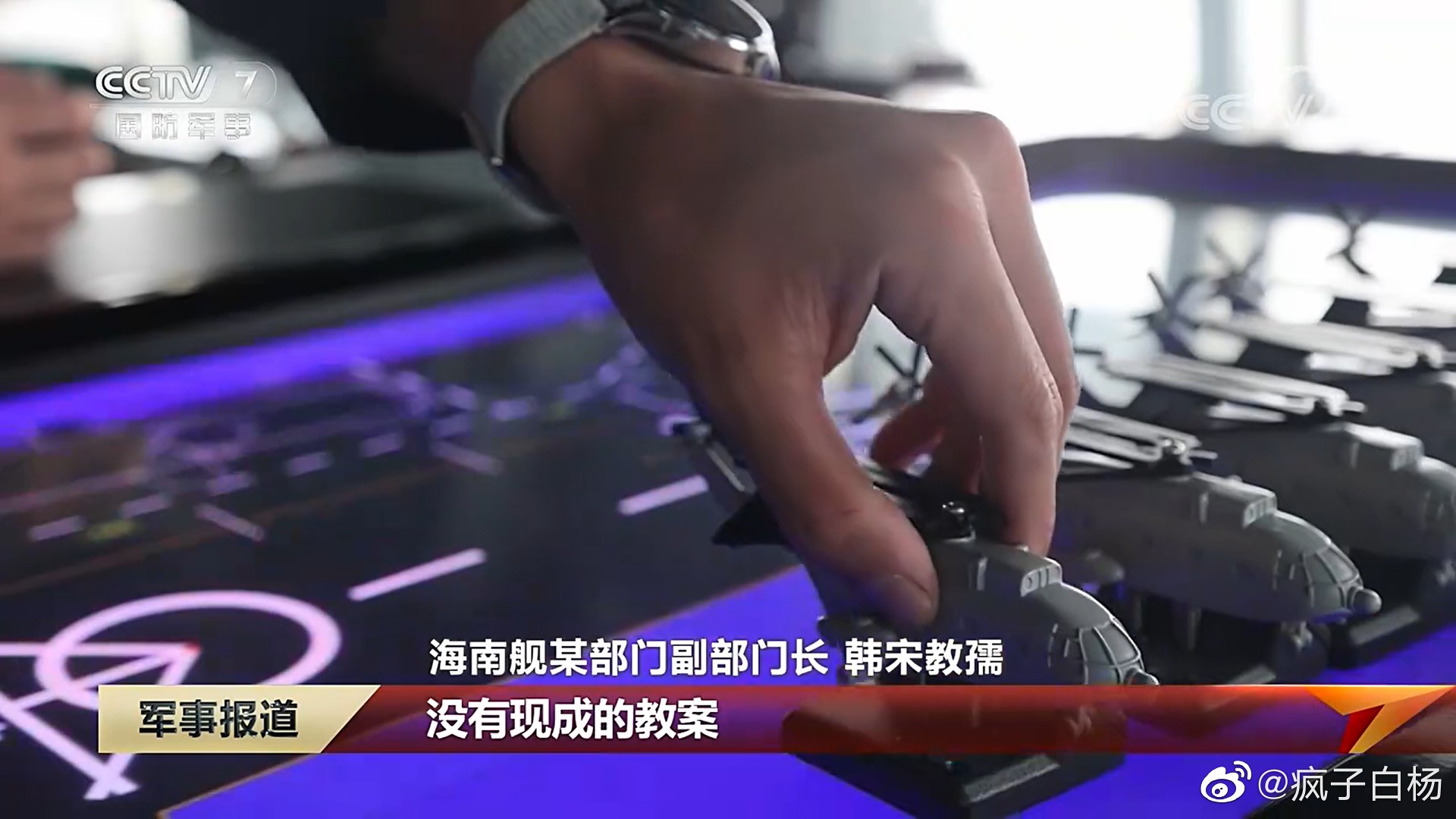You are using an out of date browser. It may not display this or other websites correctly.
You should upgrade or use an alternative browser.
You should upgrade or use an alternative browser.
075 LHD thread
- Thread starter nosh
- Start date
I'm not talking about government. Of course they are not stupid (mostly). The argument I replied to was advocated by medias for public consume and echoed by said public. From time to time government would also throw these theory around to please their voting base and yes there are many stupid individual among official caliber.That's what mediocre IQ layman would think what they (the Japanese/Australian government, etc) thinks. All these government has much more detailed intel on when the jets and ship on both side will be commissioned and what they are capable of. These governments are NOT stupid, they have eyes and brains to think and to plan. They know very well that by the time, say, Japanese F-35B's are battle ready, they will be facing at least CV-16, CV-17, and CV-18 all armed with both J-15 and J-35. This is without even having to worry about 076 or subsequent CVN's.
My sincere word of advise: just because brainless 公知恨国党、精神日本人、idiotic uninformed Japanese/Western/Indian brats-on-the-internet like to say outlandishly stupid things that irritates us, it should NOT bring us down to their level of idiocy. Japanese, Australian, Indian governments are all proper governments, they have enough well educated thinktanks and intelligence services to inform their superior on what they need for defense.
High-threat scenario stand-in aircraft with CAS profile (which is the obvious scenario for marines, no matter the nation) as of 2020s is going to be manned. UCAV can work in low threat, UCAV can do lots of strikes/intercepts in high threat, UCAV can even support manned asset in high threat CAS - but it can't do the said support by itself.A STOVL drone makes more sense just because mass limits performance and unmanned means significantly less mass. The Harrier was a brilliant invention for its time because of what aerial warfare was like in the 1970s and 80s. SARH missiles weren't very effective, most fighters didn't carry many of them - if at all - and Harriers had excellent unorthodox maneuverability for WVR. Harrier GR3 had empty mass of 5,5t. A STOVL drone could cut it in half because no pilot/catapult/instruments/cabin means less mass which means which means lighter engine which means less mass... And that's how we get to the question of - how about vertical take-off/landing similar to that of a rocket. If Musk can land a rocket then why can't we?
Whether we're turning the nozzle, the engine or the whole aircraft - is of secondary importance, it's the means.
IMHO - verticals are ultimately wrong for simple maintenance/reloading reasons.
I'm not gonna reply that troll directly so I'll just crib off of yoursJust sharing a perspective on the above
MANPADs vs HELOs
First up, MANPADs, especially uncued MANPADS have issues with engaging very-low NOE flying targets in terms of short engagement windows giving very short target acquisition times leading to no launch and battery/coolant life expiring and making the missile essentially u/s.
You tie it into a IADS and you get a VSHORADS/SHORADS platform which still has a problem. The name itself says it all, "SHORT RANGE" = range ring is very small to small. There is no way you can cover every single sq km with a sufficient density of SHORADS to make it "suicidal" for a heli assault (see antonov airport assault).
The point of a helo assault is not to directly assault the defended objective (ahemalso antonov airport assault) but to land where there is no resistance and then create havoc/move to objective. So unless one can cover every sq km, there will always be gaps in coverage that a helo assault can thread to get to where it can make a difference.
Bottomline, even in supposedly dense MANPAD coverage in Ukraine, helo ops still go on successfully (see Mariupol resupply)
LHA/D and Airpower
The primary operator of LHA/LHD with VSTOL jets is the USMC/USN. The root of this is the MAGTF requirement for organic everything within a MEF. If you don't operate fixed wings off LHAs like the USMC, then you generate your air support from other means - not quite as organic but not the end of either.
For everybody else, it is more nuanced. Limited budget but then also non-peer adversaries? It can make sense but just don't expect a LHA/LHD or even a CVL to have anywhere near proportionate capabilities as a full sized CV.
A LHA/LHD surging x qty of fixed wing VSTOL is the worst. There is no way you can recover the space given up for amphib functions and turn it into surge capacity bunkerage/magazines for sustained air ops. So it is really a glorified lily pad/FARP (which can still be useful) but lets not get carried away that it is anywhere near being a "Carrier". A purpose built CV/CVL will always trump amphib platforms moonlighting as fixed wing carriers
CVL/Lightning carriers too are all well and good but are nowhere near the bang for buck that full CVs provide. Why? Simple lack of ability to operate any of the force multipliers like AEW, tanker, EW platforms (all the things that make a complete strike/fleet defense package).
So please, LHA/LHD/CVL are NOT cost effective replacements for CV/CVN. There may be a use-case for a LHA/LHD/CVL for some countries but in all likelihood, it could also very likely be a prestige/political decision.
LHD with 20+ helos
Why build a helo carrier indeed?
Because they are required for what they are advertised to be, primarily an Amphib Assault platform and the helos are to support that.
Also, because they (LHA/LHD with lotsa lotsa helos) are really really awesome for HADR response and flying the flag in a meaningful, humanitarian way. No other military ship is as single handedly capable in this regard for coastal or archipelagic HADR.
Think about it ...
i) troop quarters that can handle surge of rescue personel or refugees
ii) enlarged medical facilites (for amphib casualties) that can handle refugees
iii) logistics capability to support marines/troops can instead generate water/food for refugees.
iv) built in cargo space and onboard facilities to move HADR supplies and vehicles
v) built in command suite for C3 given civil infrastructure is down
vi) inhouse expertise and means to deliver anything and everything by air/sea where remote communities are cut off.
For an example of the above, see Operation Flying Eagle, Meulaboh, Indonesia. The experience of the above is influencing the JMMS amphib replacement platform for the RSN.
All said and done, platforms come with different capabilities, advantages and trade-offs. It is pointedly ridiculous to criticise any platform in isolation of the requirements, environment, trade-offs and constraints that they operate within.
Out of all of the huge answers, I finally got one line that actually kind of satisfied the original question I was asking. Which was, What is the usefulness of the Type-075?
"Because they make a good ASW centerpiece for a non-CBG?"
So, that could be something useful that 075 can do as a helicopter carrier if it can operate as an Anti-Submarine warfare platform. Because, I don't think just a huge capital ship with the name of a province that is equal to a carrier in terms of prestige is just used for air assault using helicopters, since as I mentioned air defense systems are available and could be numerous. And I am not just talking about MANPADS. Which is just one component of a layered defense. There could be short range, medium range and long range systems. There is no guarantee all of those systems could be defeated via SEAD, bombings and missile attacks.
Can anyone elaborate how Type-075 or helicopter carriers in general be used for Anti-Submarine Warfare? How much of a game changer is it to have helicopter carriers. Can they comprehensively suppress US Nuclear attack submarines like Virginia Class?
Since PLA already has a fleet of destroyers, frigates and corvettes, how much of a game changer will these 075 helicopters bring when it comes to defeating US and future Australian AUKUS subs?
Yes, LHAs can be used as ASW carriers. Yes, LHAs can have a significant impact when deploying heavy ASW helicopters, if everything goes as planned.Can anyone elaborate how Type-075 or helicopter carriers in general be used for Anti-Submarine Warfare? How much of a game changer is it to have helicopter carriers. Can they comprehensively suppress US Nuclear attack submarines like Virginia Class?
No, it isn't the right thing to do, unless there is a choice. They're
(1)designed as LHAs first and foremost. They aren't purpose-built aircraft(helicopter) carriers, they aren't fleet units either.
(2)LHAs (Amphibious assault groups) are far more crucial for any Pacific war in their primary - forced entry/landing, - role. Abusing them as escort carriers is done at the expense of what they should be doing.
(3)They're comparatively vulnerable(slow-ish, loud) to submarines, and, by their vulnerability, make their escorts vulnerable. ASW is a type of warfare where the line between hunter and hunted is very blurry. For SSNs with their absolute energy freedom it's especially the case.
Summary: Unless the conflict goes very wrongly(and offensive operations are out of the picture), Courageous-ly (pun intended) risking them against the most dangerous ship-killing capability (SSNs) is generally undesirable.
JMSDF is best known for them in the modern world(4 units). Overall there are/were quite a few of them(a couple of dozens maybe), from the early 1960s onwards.Is there a specialized ASW heli carrier? Is that a thing? Maybe USSR only?
Out of all of the huge answers, I finally got one line that actually kind of satisfied the original question I was asking. Which was, What is the usefulness of the Type-075?
"Because they make a good ASW centerpiece for a non-CBG?"
I think this statement sums it all up. You only hear/read what you want to see/read.
Take a hint from what the PLAA/PLAN designed the Type 75 for and then try to understand how they fulfill that role.
Trying to force a purpose built amphibious assault Type 75 to moonlight as a fanboi CVH is blatantly disregarding the dead space of about 700,00 gallons/100,000 cubic feet that results.






